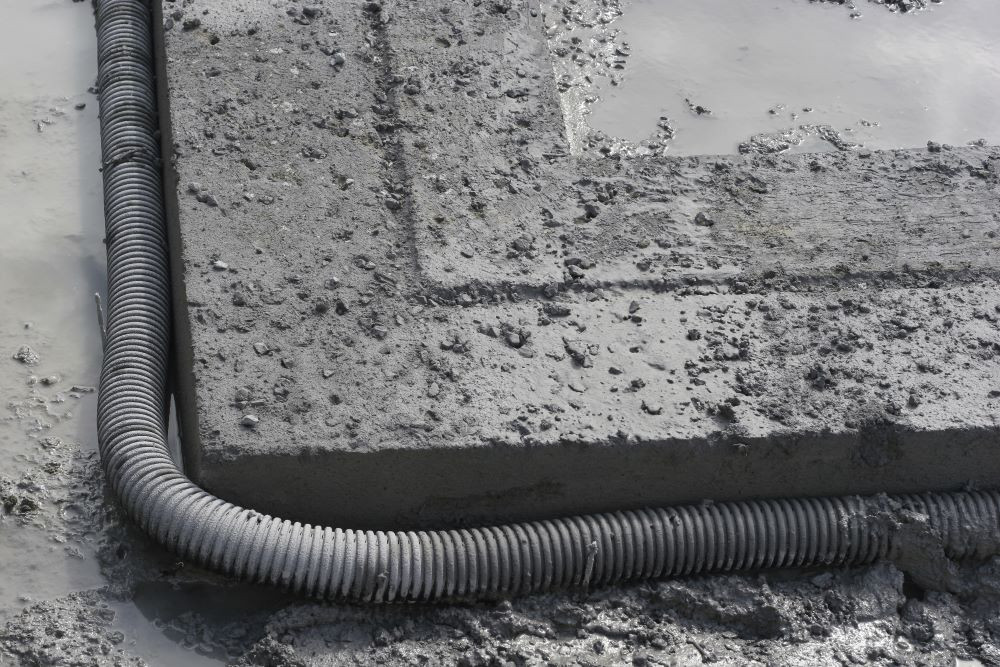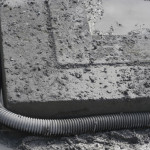Water drainage issues can cause significant damage to properties, leading to structural problems, mold growth, and landscape erosion. One of the most effective solutions to manage water around a property is the installation of French drains. This article explores what French drains are, how they work, their benefits, and the steps involved in installing and maintaining them.
Understanding French Drains
What is a French Drain?
A French drain is a trench filled with gravel or rock, containing a perforated pipe that redirects surface water and groundwater away from a specific area. The primary purpose of a French drain is to prevent water from causing damage to building foundations, basements, and landscapes. Named after Henry Flagg French, a 19th-century farmer and judge who popularized the system, French drains have become a widely used solution for drainage issues.
How Does a French Drain Work?
The concept behind a French drain is simple yet effective. Water flows into the trench through the gravel, enters the perforated pipe, and is then redirected to a safe location away from the house or other structures. The sloped trench allows gravity to guide the water through the pipe, ensuring efficient drainage.
Benefits of French Drains
1. Prevents Basement Flooding
One of the most common applications of French drains is to prevent basement flooding. By redirecting water away from the foundation, French drains reduce hydrostatic pressure, which can cause cracks and water seepage into basements.
2. Protects Foundations
Water accumulation around a building's foundation can lead to serious structural issues. French drains help protect foundations by channeling water away from the base of the building, reducing the risk of cracks and shifting.
3. Improves Yard Drainage
French drains are also beneficial for improving yard drainage. They can help manage water runoff from heavy rains, preventing waterlogging and soil erosion in gardens and lawns.
4. Reduces Soil Erosion
By controlling the flow of water, French drains reduce soil erosion in areas with heavy rainfall or poor drainage. This is particularly important for maintaining the integrity of landscapes and gardens.
5. Versatile Application
French drains can be used in a variety of settings, including residential properties, commercial buildings, sports fields, and agricultural land. Their versatility makes them an ideal solution for many drainage problems.
Types of French Drains
1. Interior French Drains
Interior French drains are installed inside a building's basement to manage water that seeps in through the walls or floor. These drains are often connected to a sump pump, which expels the water outside the building.
2. Exterior French Drains
Exterior French drains are installed around the perimeter of a building to prevent water from accumulating near the foundation. These drains are typically installed at a depth that allows them to intercept groundwater before it reaches the foundation.
3. Surface French Drains
Surface French drains are shallow drains designed to manage surface water runoff. These drains are often used in yards and landscapes to prevent waterlogging and soil erosion.
4. Trench Drains
Trench drains are similar to French drains but are designed to handle a larger volume of water. These drains are typically used in areas with heavy rainfall or in commercial settings where large amounts of water need to be managed.
Steps for Installing a French Drain
1. Planning and Design
Before installing a French drain, it's essential to plan and design the system properly. This includes identifying the problem areas, determining the best location for the drain, and designing the slope of the trench to ensure proper water flow.
2. Gathering Materials and Tools
The materials and tools required for installing a French drain include:
- Perforated pipe
- Gravel or crushed stone
- Landscape fabric
- Shovel
- Trencher or excavator
- Level
3. Digging the Trench
The first step in the installation process is to dig a trench where the French drain will be placed. The trench should be sloped to ensure proper drainage, typically at a rate of 1 inch per 8 feet.
4. Lining the Trench
Once the trench is dug, it should be lined with landscape fabric. This fabric prevents soil and debris from clogging the perforated pipe while allowing water to pass through.
5. Adding Gravel
A layer of gravel or crushed stone is then added to the bottom of the trench. This provides a stable base for the perforated pipe and helps with water filtration.
6. Placing the Pipe
The perforated pipe is then placed in the trench on top of the gravel layer. The pipe should be laid with the holes facing down to allow water to enter from the bottom and sides.
7. Covering the Pipe
The pipe is then covered with more gravel or crushed stone, ensuring that it's surrounded. This helps with water filtration and supports the pipe.
8. Wrapping the Fabric
The landscape fabric is then wrapped over the top of the gravel, completely enclosing the pipe and gravel. This helps prevent soil from entering and clogging the system.
9. Filling the Trench
Finally, the trench is filled with soil, and the surface is leveled and restored to its original condition. Grass or other vegetation can be planted on top to blend the drain into the landscape.
Maintenance of French Drains
1. Regular Inspections
Regular inspections of the French drain system are crucial to ensure it's functioning correctly. Check for any signs of clogging, water pooling, or damage to the pipe or gravel.
2. Cleaning the Drain
If the drain becomes clogged, it may need to be cleaned. This can involve flushing the system with water or using a plumber's snake to remove any blockages.
3. Repairing Damage
Any damage to the pipe or gravel should be repaired promptly to prevent further issues. This may involve digging up the affected area and replacing damaged sections of the drain.
4. Maintaining Vegetation
Maintaining the vegetation around the drain can help prevent soil erosion and keep the drain system functioning properly. Ensure that plants and grass are healthy and that roots are not interfering with the drain.
Case Studies: Effective Use of French Drains
Case Study 1: Residential Basement Flooding
Situation: A homeowner experienced frequent basement flooding during heavy rains. Water was seeping in through the foundation walls, causing damage to the basement and stored items.
Solution: An exterior French drain was installed around the perimeter of the house. The trench was dug to intercept groundwater, and the perforated pipe was connected to a sump pump system.
Results: The French drain effectively redirected water away from the foundation, preventing basement flooding. The homeowner reported a dry basement even during heavy rains, and the sump pump system ensured that any collected water was efficiently expelled.
Case Study 2: Landscape Erosion Control
Situation: A property with sloping terrain experienced significant soil erosion and waterlogging during rainstorms. The landscape was suffering, and the property owner wanted to find a solution to manage water runoff.
Solution: A series of surface French drains were installed along the slope to capture and redirect water runoff. The drains were designed to channel water to a safe drainage area away from the property.
Results: The French drains effectively managed water runoff, reducing soil erosion and preventing waterlogging. The landscape recovered, and the property owner was pleased with the improved drainage and aesthetics.
Case Study 3: Sports Field Drainage
Situation: A sports field was frequently waterlogged, making it unusable after rain. The standing water caused damage to the turf and disrupted scheduled activities.
Solution: Trench drains were installed along the perimeter and across the sports field to manage the large volume of water. The drains were designed to handle heavy rainfall and quickly redirect water away from the field.
Results: The trench drains significantly improved the drainage of the sports field, preventing waterlogging and turf damage. The field remained usable even after heavy rain, and the improved drainage extended the life of the turf.
French drains are a versatile and effective solution for managing water drainage issues around residential, commercial, and agricultural properties. By understanding how French drains work, their benefits, and the steps involved in installation and maintenance, property owners can make informed decisions to protect their buildings and landscapes from water damage.
Whether preventing basement flooding, protecting foundations, or improving yard drainage, French drains offer a reliable method for managing water flow. Consulting with a professional for installation and regular maintenance ensures the system's long-term effectiveness, providing peace of mind and safeguarding property investments. With the right approach, French drains can be an invaluable tool in the fight against water damage.
Contact the Professionals at Everdry Waterproofing of Greater Grand Rapids Today! (800) 275-7910





